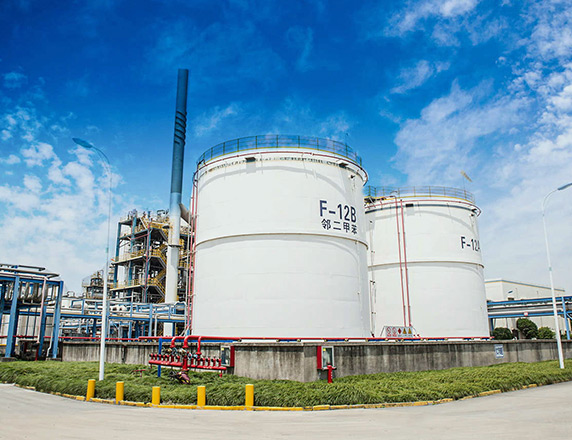DPHP Usage Requirements
DPHP, or Di(2-propylheptyl) phthalate, is a plasticizer that is used in various applications, such as in the production of flexible PVC products, coatings, and adhesives. The usage requirements for DPHP depend on the specific application and the properties desired in the final product.
In general, DPHP is used in smaller quantities compared to other plasticizers, such as diisononyl phthalate (DINP) or di(2-ethylhexyl) phthalate (DEHP). This is because DPHP has a higher molecular weight, which means it is less volatile and more resistant to migration, making it a more stable and longer-lasting plasticizer.
The specific usage requirements for DPHP can vary depending on the product being produced and the processing conditions. For example, in PVC production, DPHP is typically added to the PVC resin in quantities ranging from 10-30% by weight, depending on the desired flexibility and other properties of the final product. The processing conditions, such as temperature and mixing time, can also affect the amount of DPHP needed to achieve the desired properties.
In coatings and adhesives, DPHP is typically added in quantities ranging from 5-20% by weight, depending on the specific application and the desired properties of the final product.
It is important to note that the usage requirements for DPHP, as with any plasticizer, should be followed carefully to ensure the safety and effectiveness of the final product. Improper usage of plasticizers can result in poor product quality, increased environmental and health risks, and potential regulatory violations. It is important to follow appropriate safety and handling procedures when using and storing DPHP.
DPHP Usage Standard
There are several usage standards and regulations that apply to the use of
DPHP, or Di(2-propylheptyl) phthalate, as a plasticizer in various applications. These regulations are designed to ensure the safety and effectiveness of products that contain DPHP, and to minimize potential risks to human health and the environment.
In the United States, the use of DPHP is regulated by the Environmental Protection Agency (EPA) under the Toxic Substances Control Act (TSCA). DPHP is included on the TSCA Chemical Substance Inventory, which means that it has been evaluated by the EPA and deemed safe for use in certain applications.
In Europe, the use of DPHP is regulated under the Registration, Evaluation, Authorization, and Restriction of Chemicals (REACH) program. Under REACH, DPHP is classified as a Substance of Very High Concern (SVHC) due to its potential endocrine-disrupting properties . However, it is still allowed for use in certain applications under certain conditions.
The usage standards for DPHP can vary depending on the specific application and the regulatory requirements in each country or region. In general, DPHP is used in smaller quantities compared to other plasticizers, such as diisononyl phthalate (DINP) or di(2-ethylhexyl) phthalate (DEHP), and it is often used as a replacement for these phthalate plasticizers due to concerns about their potential health and environmental effects.
To ensure the safety and effectiveness of products that contain DPHP, it is important to follow the appropriate usage standards and regulatory requirements in each country or region. This may involve limiting the concentration of DPHP in the final product, following specific processing conditions, or ensuring That the product is labeled and handled appropriately to minimize potential risks.
Design Features Of DPHP
DPHP, or Di(2-propylheptyl) phthalate, is a plasticizer that is used in various applications, such as in the production of flexible PVC products, coatings, and adhesives. The design features of DPHP are important for its effectiveness as a plasticizer and for the properties it imports to the final product.
Some of the key design features of DPHP include:
Molecular weight: DPHP has a higher molecular weight compared to other phthalate plasticizers, such as diisononyl phthalate (DINP) or di(2-ethylhexyl) phthalate (DEHP). This means that DPHP is less volatile and less likely to migrate out of the final product, resulting in a more stable and longer-lasting plasticizer.
Low toxicity: DPHP is considered to have low toxicity compared to other phthalate plasticizers, which makes it a more attractive alternative for use in applications where human or environmental exposure is a concern.
High flash point: DPHP has a high flash point, which makes it less flammable compared to other plasticizers. This can be an important design feature for applications where fire safety is a concern.
Good plasticizing efficiency: DPHP has good plasticizing efficiency, which means that it can improve the flexibility, softness, and other properties of the final product at relatively low concentrations.
Compatibility: DPHP is compatible with a wide range of polymers, including PVC, vinyl acetate copolymers, and synthetic rubbers. This makes it a versatile plasticizer that can be used in a variety of applications.
The design features of DPHP make it a valuable plasticizer for use in various industries. However, it is important to follow appropriate safety and handling procedures when using and storing DPHP to minimize potential environmental and health risks.



 انگلیسی
انگلیسی 中文简体
中文简体



